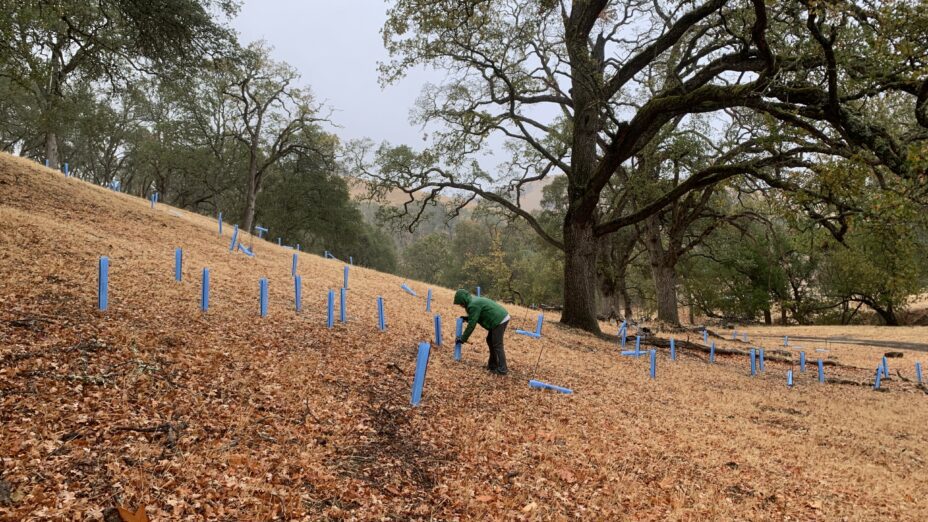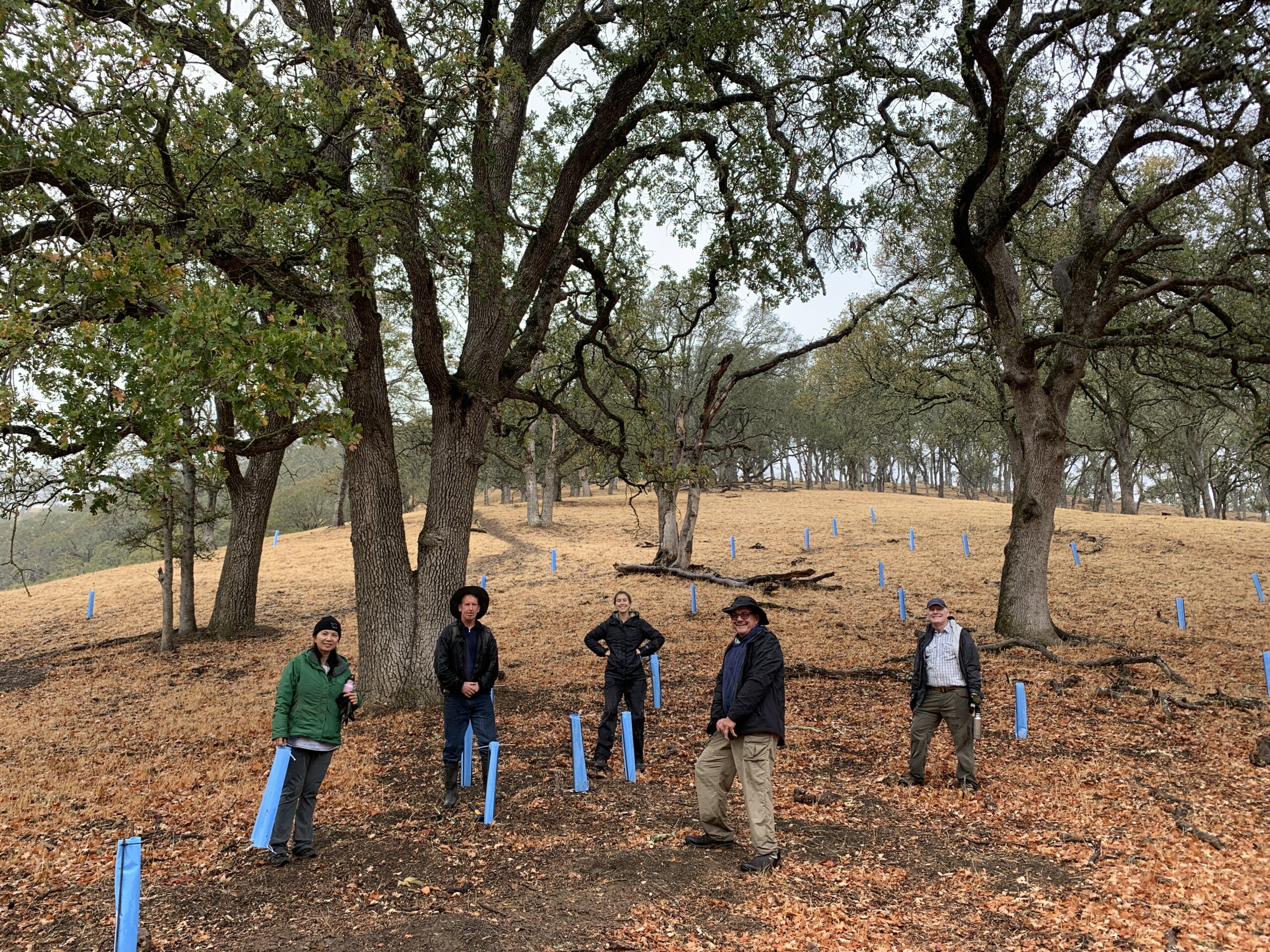
This summer we announced that we are committing to protecting planting 10,000 native trees and plants in the next 10 years. We’re working to restore natural habitat and sequester carbon as part of our Climate Action Plan.
Progress to Date on Protecting and Planting 10,000 Trees and Plants
Since this summer, we’ve protected and planted 1,000 trees and plants among all of our properties! We planted more than 160 native plants at Marsh Creek 4, Marsh Creek 6, and Mangini Ranch in early fall, and then we also planted several hundred more in November and December.
We protected a bunch of volunteer manzanita seedlings in December. And we planted our 1,000th tree, a sycamore seedling, on Wednesday, December 15.
Divided up, 10,000 trees and plants over 10 years comes down to 1,000 trees and plants per year on average. So far, we’re on track to meeting our goal!
A recent tree workday was at Curry Canyon Ranch, where volunteers protected volunteer trees (trees that sprouted on their own and were not planted by people) by putting them in tree cages. “Caging” or “tubing” saplings prevents them from being eaten by animals and increases the saplings’ chances of survival until they are well-established.
The majority of the volunteer trees at the Curry Canyon Ranch sites near our field station are endemic blue oaks (Quercus douglasii). We’ve also protected valley oaks (Quercus lobata), bay laurels (Umbellularia californica), gray pines (Pinus sabiniana), and oracle oaks (Quercus x morehus) there as well.

Volunteers caging tree saplings (mostly blue oaks) at our recent tree workday at Curry Canyon Ranch. Photo by Haley Sutton.
Growing Forests to Capture Carbon
A 2013 UN article maintains that forests are a practical and affordable component of the solution to the climate crisis. And a UN 2020 report found that land use is one of the most powerful solutions to addressing climate change.
Planting native plants is especially important; they are better adapted to the local climate, even in extreme events.
And native plants sequester a lot of carbon. For instance, native bunchgrasses can have root systems that can reach up to 12 feet underground (much deeper than non-native annual grasses), and oak tree roots can reach up to 50 feet deep.

Our goal is to protect these tree saplings so they can mature and sequester carbon. Photo by Haley Sutton.
If a fire sweeps through and burns the plants above ground, the roots remain unharmed. Even better, the roots also store and sequester carbon, and they will remain sequestered in a fire event.
“According to a major study, soil carbon represents a quarter of all regenerative climate solutions; of that quarter, 40 percent involves protecting existing soil carbon from degradation and 60 percent involves rebuilding depleted stocks,” writes Paul Hawken in Regeneration: Ending the Climate Crisis in One Generation.
We’re committed to doing our part. We invite you to help us meet our goal by volunteering at our DiRT days and other volunteer events!

Help us protect and plant 10,000 trees and plants! Photo by Roxana Lucero.
We are grateful to our lead sponsor, Marathon Martinez Renewable Fuels, for their support of this project.


